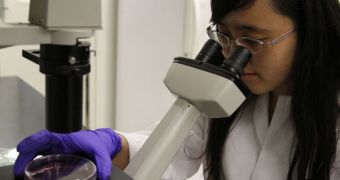Investigators at the Arizona State University (ASU), in Tempe, say that they are currently working on developing a new class of synthetic vaccines. When completed, the new substances will be significantly safer and more effective than their counterparts today.
Using approaches characteristic to a field of research called DNA nanotechnology, researchers at the ASU Biodesign Institute hope to be able to synthesize a series of compounds that do not occur in nature. These vaccines would be targeted specifically at a variety of conditions.
Led by BI immunologist Yung Chang, researchers are basically trying to create a vaccine that can be transported to the cells it needs to reach aboard self-assembled, three-dimensional DNA nanostructures.
Achieving this objective is not as simple as it may sound. While other research groups have already mastered other delivery methods – such as placing the active molecules inside nanoparticles – this particular one involves creating the protective cages out of deoxyribonucleic acid.
The issue with drug molecules, in general, is that not many of them reach their targets after they are injected in the body. The immune system attacks all foreign invaders, and quickly degrades the molecules. Thus, only a small portion of the active compounds make it to their destination.
Chang, who is an associate professor in the ASU School of Life Sciences, and her team, which includes DNA nanotechnology innovator Hao Yan, published details of their approach in the latest issue of the esteemed scientific journal Nano Letters.
“When Hao treated DNA not as a genetic material, but as a scaffolding material, that made me think of possible applications in immunology,” says Chang, who also holds an appointment as a researcher in the BI Center for Infectious Diseases and Vaccinology.
“This provided a great opportunity to try to use these DNA scaffolds to make a synthetic vaccine. The major concern was: Is it safe? We wanted to mimic the assembly of molecules that can trigger a safe and powerful immune response in the body,” she adds.
The new vaccine designs are still in their earliest phases, but scientists say that practical applications could be made possible within a few years. The team is currently funded by the Department of Defense and National Institutes of Health's (NIH) National Cancer Institute, National Institute of Drug Abuse.

 14 DAY TRIAL //
14 DAY TRIAL //